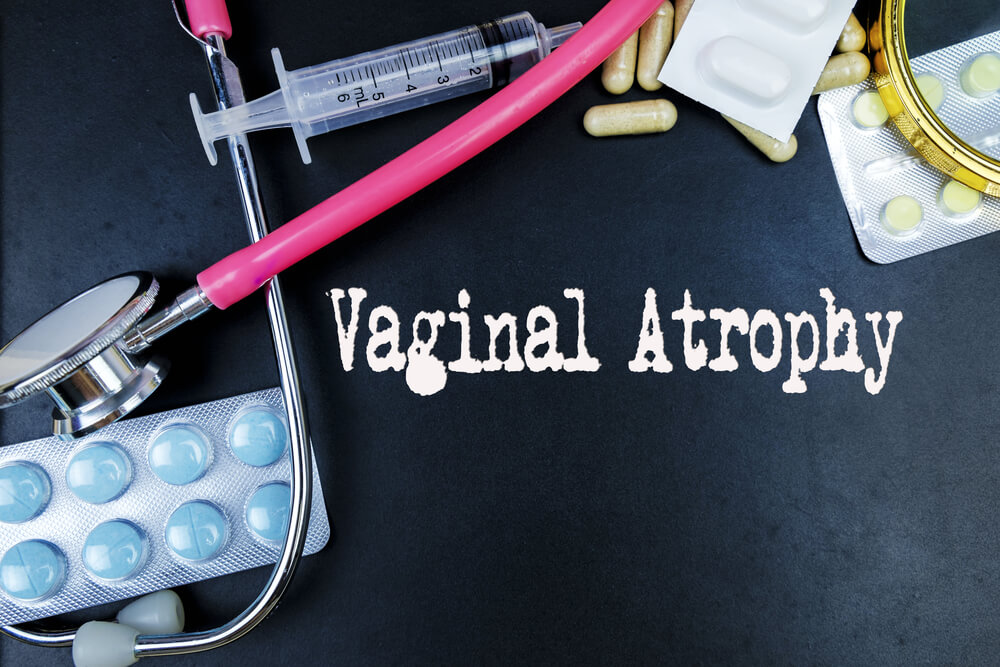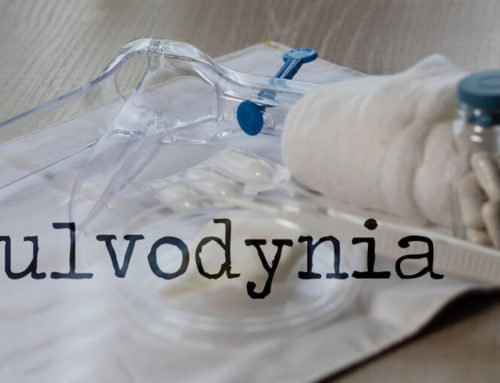Atrophic vaginitis or vaginal atrophy is when the vaginal lining gets dryer and thinner, resulting in uncomfortable symptoms such as vaginal burning, itching, pain during sex, and more.
More often, vaginal dryness or atrophy will also include urinary tract infections (UTIs) and other urinary tract issues, along with frequent urination. Because of this, some medical experts have been using the term GSM or genitourinary syndrome of menopause when referring to vaginal atrophy since it also includes the urinary issues that are most often present.
In most cases, atrophic vaginitis occurs when women enter menopuase as a result of decreased estrogen levels in the body. Still, the condition may develop in younger women when something affects their body’s hormonal balance.
In this article, we’ll discuss the most prevalent symptoms of the condition and its leading causes and discuss options regarding vaginal atrophy treatment. If you still have questions by the end of the article, feel free to contact Carreras Medical Center to schedule an appointment with us.
Atrophic Vaginitis vs. Yeast Infection: What’s the Difference?
Both of these conditions may include symptoms of itching, vaginal dryness, pain, and redness. Still, the leading cause behind yeast infections is a fungal infection, not issues with estrogen levels.
Risk Factors of Vaginal Atrophy

Generally speaking, women over 50 and in menopause are at higher risk of experiencing the condition. Also, other factors may increase the chances of developing atrophic vaginitis, such as:
- Immune disorders
- Lack of sex
- Chemotherapy or radiation therapy-induced decreased ovarian function
- Taking medications with antiestrogenic properties (Provera, Nolvadex, Synarel)
- Nonfluctuating estrogen levels
- The removal of the ovaries
- Smoking
- Postpartum placental estrogen loss
- Breastfeeding
Also, around half of the women who reach menopause usually experience some of the symptoms of vaginal atrophy.
Leading Causes of Atrophic Vaginitis
As discussed before, the main culprit behind the condition is the lack of estrogen in the body. During menopause, estrogen levels decrease, which may lead to the thinning of the vaginal lining. The lining may also lose its elasticity, while the vaginal canal may shorten and narrow. The decreased estrogen levels will also lower the vagina’s natural ability to lubricate itself.
Usually, decreased vaginal lubrication is the first sign of atrophic vaginitis.
Main Symptoms of Vaginal Atrophy
The most obvious signs of the condition include the following:
- Vaginal dryness: As the vagina’s ability to lubricate itself decreases, women will usually experience vaginal dryness, which may lead to itching and burning sensations. Also, intercourse may become painful.
- Vaginal burning: When the vaginal tissue becomes inflamed due to atrophy, women may also feel itching and vaginal burning which may be experienced during urination or after sex.
- Bleeding or spotting: As the tissue in the vaginal lining becomes thinner, the blood vessels in the vagina may leak blood since they have less protection. This becomes even more pronounced when subjected to pressure or friction from things like intercourse.
- Dyspareunia (painful sexual intercourse): The reduction in estrogen levels leads to decreased vaginal fluid production, which may lead to vaginal dryness, making penetration difficult and sex painful. Apart from the physical pain, this may also lead to the loss of sexual enjoyment and relationship problems, not to mention that it may also serve as a source of stress and anxiety.
Also, as vaginal atrophy may also affect the urinary system, other symptoms could occur, like:
- Frequent urination
- Pain while urinating
- UTIs
- Blood in the urine
- Burning sensation during urination
- Stress incontinence
Diagnosis
More often than not, a simple pelvic exam and your physical symptoms are enough to establish a diagnosis. It also helps experts to know whether you’re in menopause.
Also, doctors may establish a proper diagnosis based on the vagina’s appearance:
- It’s narrowed and looks shortened
- It has a whitish discoloration to it
- Visible dryness, swelling, and redness
- Loss of elasticity
- Pubic hair may become sparse
- Vulvar patch redness and lesions may also appear
- Minor lacerations close to the vaginal opening
Sometimes, healthcare providers may order laboratory tests to differentiate atrophic vaginitis from other medical issues. These tests are usually the following:
- Urine samples
- Ultrasound
- Pap smear
- Serum hormone testing
- Microscopy
- Vaginal pH test
Vaginal Atrophy Treatment
After establishing a proper diagnosis, the healthcare provider will work closely with the patient to create the best vaginal atrophy treatment plan. This means that if you are experiencing the condition, your doctor will consult with you to come up with the most effective treatment plan based on your symptoms, their severity, your medical history, and other crucial factors.
Some vaginal atrophy treatment options will only treat the symptoms, while others address the low levels of estrogen, which will also manage to alleviate symptoms.
Moisturizers and lubricants can address dryness as they will loosen and moisten the vagina, improving comfort during sexual intercourse. Still, these won’t be able to restore the vagina’s health altogether. On that end, it’s not recommended to use vaseline as it may lead to yeast infections. Coconut oil should also be avoided as it may trigger allergic irritation.
Dilators widen the vagina and can help with sexual intercourse. For best results, experts often recommend using these devices in conjunction with local estrogen therapy.
Hormone therapy improves symptoms and restores the vagina’s normal acid balance, restoring skin thickness and improving bacterial balance and natural moisture.
There are several hormonal treatment options available, and they are:
- Low-dose vaginal estrogen therapy: These only treat vaginal dryness and won’t be absorbed by the rest of the body. They can come in the form of creams, vaginal suppositories, and rings.
- Hormone replacement therapy: These higher-dose treatments affect the entire body, not just the vagina, having a more profound effect on the patient. Before opting for this treatment option, consult your healthcare provider to see whether you’re a good candidate for systemic hormone therapy.
Finally, laser treatments can also help restore the natural function of the vagina and alleviate the symptoms of atrophy, thanks to low-heat laser pulses that stimulate natural elastin and collagen production along with increasing lubrication.
Can Vaginal Atrophy Be Prevented?

Unfortunately, the decrease of estrogen due to aging can’t be prevented, but some practices can keep vaginal atrophy under control. For instance, you can:
- Avoid tight-fitting clothes
- Avoid perineal pads
- Avoid panty liners
- Stop using deodorants that may irritate the vagina
- Stay away from irritating powders
- Avoid spermicides and lubricants
Don’t Just “Accept” Atrophy
Just because your estrogen levels are lower, it doesn’t mean that you should just deal with painful intercourse, UTIs, vaginal itching, and burning. As you can see, there are several treatment options that will alleviate symptoms and may help with other issues associated with low estrogen, too.
To learn more about your options and to get back to enjoying intimacy like you used to, reach out to our Women’s Health Clinic in Hialeah, FL, today.







